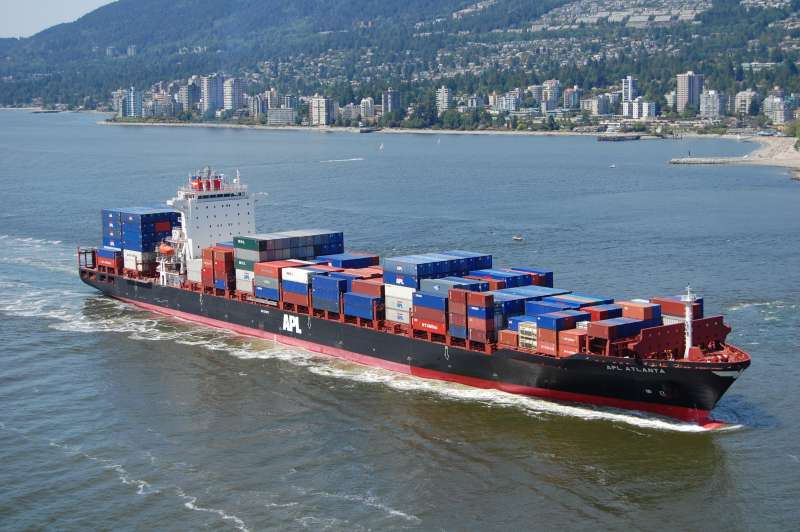
by Fronetics | Jan 19, 2016 | Blog, Current Events, Strategy, Supply Chain
The supply chain should prepare for future changes in the wake of the Paris Climate Agreement.
 The 2015 Paris United Nations Climate Change Conference of the Parties (COP) was the 21st yearly meeting of its kind. It drew attention, coming off the heels of the Paris attacks. It also garnered attention because of growing concerns about storms and flooding, ice caps melting, and increasing temperatures. The twelve-day conference hosted 185 nations, and ended with major outcomes that will certainly have an impact on how supply chains will do business.
The 2015 Paris United Nations Climate Change Conference of the Parties (COP) was the 21st yearly meeting of its kind. It drew attention, coming off the heels of the Paris attacks. It also garnered attention because of growing concerns about storms and flooding, ice caps melting, and increasing temperatures. The twelve-day conference hosted 185 nations, and ended with major outcomes that will certainly have an impact on how supply chains will do business.
The biggest outcome from the talks is the agreement to reduce the world’s greenhouse gases significantly to keep temperatures from rising 2 degrees Celsius, and a longer-term agreement to reach net-zero emissions by the second half of the century. If this goal isn’t met, it could bring terrible outcomes globally, such as the loss of entire island nations that could go completely underwater.
Even if the goal is met, there are concerns about the irreversible damage that has been done in the past decades, which indicates the necessity of the plan. The agreement is described as, “probably the most important international agreement in history” by UN Executive Director Achim Steiner.
According to Adrian Gonzalez, president of Boston-based Adelante SCM, “It’s too soon to know what impact this will have on supply chain in the near term, but considering that the agreement is voluntary and there are no enforcement mechanisms in place, my sense is that very little will change over the next twelve months.”
Here are some things supply chain companies need to be considering in the wake of the Paris Climate Agreement, despite the future being unclear:
Assessment
According to James Allan, head of environment and climate change at risk analysis company Versik Maplecroft, “Many companies will have difficulty understanding their exposure to various climate risks, so they may need to bring new skillsets into the organisation, conduct internal studies, and update policies and internal processes.” This might be a new endeavor for companies, or one that wasn’t high on the priority list in the past.
Integration
Allan goes on to say, “A key step will be integrating climate change risks into strategic decision-making and operational risk-management processes.” We will have to wait to see what our congress decides in regards to making the Paris Agreement guidelines into law in the United States. Based on the requirements, companies may have many changes to implement into their business practices.
Partnering
Assessing how partners manage risk and plan to make changes is important, as companies will want to be on the same page. Forming new partnerships with others might also be crucial, particularly if those companies are ahead of the curve on environmental compliance. “Partnerships will also be crucial for successfully managing climate risks, including with supply chain partners, governments, business partners, civil society and the wider public,” says Allan.
We will see what comes from the Paris Climate Agreement and what it has in store for the supply chain and, on a larger scale, the world.

by Fronetics | Jan 14, 2016 | Big Data, Blog, Data/Analytics, Strategy, Supply Chain
 Fronetics Strategic Advisors is a leading management consulting firm. We advise and work with companies on their most critical issues and opportunities: strategy, marketing, organization, talent acquisition, performance management, and M&A support.
Fronetics Strategic Advisors is a leading management consulting firm. We advise and work with companies on their most critical issues and opportunities: strategy, marketing, organization, talent acquisition, performance management, and M&A support.
We’ve gathered our most-read big data articles of 2015:
With current technologies, there are increasing amounts of information to be gathered and exchanged in the world, creating more opportunities for businesses to harness that information and chart a course, or to tweak processes based on that information. According to an Accenture study, “97% of executives report having an understanding of how Big Data analytics can benefit their supply chain, but only 17% said that they have implemented it in at least one supply chain function.” Read the full article.
KPMG recently conducted a survey of 144 CFOs and CIOs with the objective of gaining a more concrete understanding of the opportunities and challenges that big data and analytics present. The survey found that 99% of respondents believe that data and analytics are at least somewhat important to their business strategies; and 69% consider them to be crucially or very important. Despite the perceived value of big data, 85% of respondents reported that they don’t know to analyze and interpret the data they already have in hand (much less what to do with forthcoming data). Read the full article.
Forget for a moment the potential of adopting big data analytics throughout the entire supply chain, and consider instead how big data can untangle and integrate seemingly unrelated masses of data to solve small problems in a warehouse or distribution center. That’s exactly what this company did. Read the full article.
Executives are eager to jump on the bandwagon, too. Although only 13% of 250 executives surveyed by Accenture said they use big data primarily for predictive purposes, as many as 88% indicated big data analytics is a top priority for their company. With an increasing number of companies learning to master the precursors to developing predictive models — namely, connecting, monitoring, and analyzing — we can safely assume the art of gleaning business intelligence from foresight will continue to grow. Read the full article.

by Fronetics | Jan 12, 2016 | Blog, Leadership, Marketing, Strategy, Supply Chain, Talent

Recruiting and retaining top talent is one of the largest issues the supply chain faces today. It has, in many ways, become an industry of gaps: skills, talent, and gender, to name a few. How can companies secure their future by acquiring, developing, and keeping employees with the potential to undertake future leadership roles?
Fronetics Strategic Advisors works with clients to understand and execute on talent acquisition, performance management, learning and development, and succession management. We also work with clients to design and develop roles and responsibilities, on leadership development, mentoring and counseling, and on performance management and compensation strategies.
Here are our most-read talent articles of 2015:
While the number of full-time women in the workforce is up 15% since 1979, the number of women in the manufacturing sector is the lowest it has been since 1971.The gender gap extends more broadly to the supply chain, as well, with 70% and 80% of positions held by men. This article examines the talent crisis within the industry as an opportunity to help close the gender gap, and offers suggestions for building that bridge. Read the full article.
This interview with Rodney Apple, founder of the SCM Talent Group and supply chain recruiter for the majority of his 19-year career within the staffing industry, examines the challenges facing the industry and opportunities to address the talent crisis moving forward. Read the full article.
The outlook seems dire: by 2025, 60 million baby boomers will exit the workforce, leaving a gigantic gap when 40 million millennials take their place. What’s more, as few as 20% of the workforce will possess the broad range of skills required of 60% of all new supply chain jobs. The good news is that this looming crisis represents an ideal opportunity for recent college grads and mid-level supply chain management. Companies hoping to appeal to top candidates in the future should be proactive about meeting their professional needs through initiatives like competitive salaries and cross-functional training — or else, they might miss out. Read the full article.
Zappos offers new hires a $4,000 bonus to quit after an initial training program — and it actually has helped them retain top talent. Offering an early out to employees can be an effective method to detect personnel issues up front and ultimately can save your company from a major financial loss in the future. Read the full article.
When it comes to your career, connections matter. This article lists five reasons why building a strong network is crucial to your professional success. Read the full article.
Millennials — or, those born after 1981 — potentially could breathe new life into the graying supply chain industry. This article examines who millennials are and how companies might attract and retain talent within this oft-misunderstood generation. Read the full article.
Promising employees expect more from their employers when they outperform their peers — and not just in terms of compensation (though that is very important). When those expectations are met with disappointment, the company is at risk for losing top talent. This article discusses strategies for mitigating the loss of talented employees. Read the full article.
According to one study, only 12.5% of companies in the supply chain industry engage in formal succession planning, or the process of identifying top internal performers with the potential to fill key leadership positions. With the dearth of talent facing the supply chain, employers would be wise to invest in succession planning (and their most promising employees) — particularly through these three aspects of the process. Read the full article.
Focusing on education and training, employee retention and growth, and rethinking the talent pool itself does not address the bigger issue in the supply chain skills gap: the industry just isn’t perceived as sexy. What can companies do to overhaul their image and attract new and qualified talent? Read the full article.
Replacing employees is extremely costly — anywhere from 50 to 400% of their annual salaries, it is estimated — yet more than 2 million people voluntarily leave their jobs each month. Companies who are not tending to their human resource assets may be taking a major financial hit. Here are five employee retention strategies to help create a culture where employees are satisfied and interested in working for you long term. Read the full article.

by Fronetics | Jan 11, 2016 | Blog, Content Marketing, Logistics, Marketing, Social Media, Strategy, Supply Chain

Over the past year we have helped many clients both develop and execute social media strategies. We have also disseminated information on how companies can use social media as an effective business tool.
Here are the top 10 social media articles from 2015:
Leads are essential to the growth of your business, and your marketing strategy is built around finding and connecting with leads. So when 92% of all marketers indicate that their social media efforts have generated more exposure for their businesses, you should take note and make social media part of your prospecting strategy. Read the full article.
The supply chain makes the world go round. In order to be one of the leaders in the chain, it’s important to remember that internet users make up nearly half of the world’s population and that social media is on the rise. Don’t miss that boat. Read the full article.
Many transportation and logistics companies think about social media and how to use it, but cite a lack of time as a reason they haven’t explored the various platforms. Thinking about how social media can work for your logistics or transportation company is the first stop towards progress. Read the full article.
Social media is an ideal marketing platform for small businesses because it can be relatively inexpensive but have a high impact on growth. With a targeted strategy in place and a little time, your company can cultivate your brand, engage with customers, and form business relationships. And because small companies can be nimble, you can continually adjust your strategy to ensure the return on investment keeps paying off. Two companies that have seen social media to be effective: Coyote Logistics and Transplace. Read the full article.
The social economy is estimated to be $1.3 trillion U.S. dollars annually. Social media is more than a collection of personal commentary, photos, and inspirational quotes. Increasingly, social media creates an opportunity to gather information, and social media is becoming a useful tool for businesses to connect with other businesses and clients. Although Facebook is notorious for gathering information, social media companies are not the only companies who can gather intelligence. Read the full article.
Offering unparalleled access to leads and face to face communication with prospects and customers, trade shows prove to be a successful marketing strategy for many companies. But is your company making the most of trade shows? Companies that integrate modern digital communication practices into tired trade show routines are likely to increase lead to customer conversion rates while shortening lead and sales cycles. Read the full article.
Companies within the logistics and supply chain industries have been slower to participate in social media than other industries. The primary reason being because of a lack of understanding of what social media is and the role it can play for business. Unfortunately, companies who do not participate in social media miss out on opportunities – and revenue. Read the full article.
Using the information and intelligence gathered is essential. There is; however, another critical element: engagement. Engagement is a differentiator. Without engagement you are a lurker. You don’t want to be a lurker. Read the full article.
Social media has been found to be a strategic tool for logistics companies. Check out our infographic. Read the full article.
Through the use of social media you can enable consumers to make more informed purchase decisions. Additionally, you can use social media to answer questions and better educate consumers on how to use your product thereby reduce no fault found returns. Read the full article.
Social media is an incredible tool; however, for it to be effective it must be driven by strategy, be consistent, and must have someone managing the execution. At Fronetics, our social media strategists distribute content, curate content, engage your target audience, and monitor your social networks. We develop a social media strategy that aligns with your company’s goals. We analyze your competition, classify your target audience & cultural attributes, identify the influencers in your industry, recommend platforms, detail best engagement practices, create social media schedules, and identify specific tactics that deliver results. Through the proper execution of social media, your brand is given a voice and personality, and becomes more accessible to your target audience.

by Fronetics | Jan 7, 2016 | Blog, Content Marketing, Marketing, Supply Chain

Last year was big for content marketing within the logistics and supply chain industries. While companies in general had been hesitant to adopt an inbound marketing approach, many caught on and found this strategy to have a major impact on business in 2015.
Fronetics has helped many clients achieve their goals through targeted inbound marketing efforts. Our data-driven approach aligns business objectives with a marketing program that delivers results with a targeted ROI.
Here are the top content marketing articles in 2015:
1. Five reasons companies in the supply chain and logistics industries should use inbound marketing
Though many companies within the supply chain and logistics industries tend to disregard inbound marketing, it actually can be a wildly successful strategy. Here are five reasons why companies in these industries should be using inbound marketing. Read the full article.
2. Content and Social Media: A Perfect Match for Customer Engagement and Business Growth
This guest blog by Kecia Gray, former vice president of corporate marketing & communications at Transplace, discusses how social media has become an integral part of Transplace’s marketing and communications strategy. It has been key to expanding brand awareness and the company’s thought leadership in the logistics and transportation space. Read the full article.
3. Content as a marketing tool for the logistics and supply chain industries
Fronetics Strategic Advisors conducted a survey focused on the use of content within the logistics and supply chain industries found that companies are using content as a marketing tool and are realizing results. Read the full report.
4. Report: Content use within the logistics and supply chain industries
The survey on industry content use conducted by Fronetics found that companies within the logistics and supply chain industries are creating more content than ever before. Respondents reported using content marketing in order to strengthen overall brand awareness, generate leads, and establish the company as an industry leader. Read the full report.
5. All content is not created equal. Why you need good content.
Good content drives profitable customer action, while bad content is a waste of time and precious resources. What makes good content, and how can you get it? Read the full article.
6. Get Results from Content Marketing by Telling Great Stories
Guest author Thijs Messelaar, a 15-year content-writing veteran, explains how the best content marketing is like a really good story. You must engage your audience emotionally to get them interested in you and to earn their trust. Read the full article.
7. Content marketing ROI for reverse logistics companies
Inbound marketing is effective in garnering consumers’ attention, but it is important to assess return on investment. Reverse logistics companies can use a fairly simple formula to calculate content marketing ROI. Read the full article.
8. Content marketing for the logistics and supply chain industries
Fronetics developed a content marketing guide specifically for companies within the logistics and supply chain industries. In it is step-by-step instructions, templates, lists, and samples to walk you through building your own content strategy. Read the full article.
9. Using inbound marketing to market and sell luxury real estate
Many luxury real estate firms are already using digital and social media to carry the lifestyle brand they’ve built around their properties into the online world. With the use of inbound marketing, they are creating new virtual “touch points” to connect with affluent buyers. Read the full article.
10. Six digital and content marketing tasks to outsource
Outsourcing several digital and content marketing tasks can help companies enjoy a reduction (or cost savings) in operating costs, improve their focus on core competencies, and let employees concentrate on their highest and best use. This article identifies six areas where companies can leverage outsource partners to support their digital efforts. Read full article.
If you are looking to increase business in 2016, consider contacting Fronetics to develop a content marketing strategy. We work with you to create an individualized plan for your specific situation and needs. We identify challenges, trends, and opportunities and take action so that your content marketing program constantly evolves and delivers results.
You may also like:

by Fronetics | Jan 6, 2016 | Blog, Logistics, Strategy, Supply Chain, Transportation & Trucking

Fronetics Strategic Advisors is a leading management consulting firm focused on the logistics and supply chain industries. Our industry and functional expertise enables us to fully support and guide our clients as they address critical business issues, take advantages of opportunities, and grow their company. Our clients rely on us to create and execute marketing strategies, capture value from their customer and channel strategies, identify opportunities for increased revenue, create and execute new organizational models, and lead transformational organizational change.
Supply chain talent is a salient issue. At Fronetics we not only provide thought leadership on this subject, we also engage with future talent. Each year Fronetics collaborates with MBA students from the University of New Hampshire Peter T. Paul College of Business and Economics. I am excited that several of the most-read logistics and supply chain articles were written by these students.
Here are the 10 most read logistics and supply chain articles of 2015:
It’s difficult to accurately predict what Amazon will be doing fifteen years from now, but whatever they are doing, it will mostly likely continue to shape consumer expectations and impact the surrounding business and consumer markets in ways we had not thought of beforehand. Read the full article.
There is a common misconception that the majority of goods we purchase arrive via plane, or are transported via road. The reality is that 90% of everything we buy comes by ship — and it’s not likely that this number is going to decrease any time soon. Read the full article.
While many of us may be familiar with recent advancements in home automation, like the Nest thermostat, the real impacts of the Internet of Things (IoT) will be in supply chain management. Recent reports by Cisco, IDC and Gartner all claim that a significant increase in the number of devices making up IoT will have a profound impact on how future supply chains will operate. Read the full article.
Cathy Morris, senior vice president and chief strategy officer for Arrow Electronics, Inc., talks women in the supply chain and offers up career advice. Read the full article.
Regularly tracking your relationship with your suppliers and their performance toward your expectations is critical to ensure the success of your business. One mechanism for tracking this is the supplier scorecard — in essence, a report card for your supplier. Supplier scorecards, when used effectively, can help maintain a healthy supply chain and will benefit both parties. If not used effectively, supplier scorecards can damage the supplier relationship and hurt both businesses. Read the full article.
The pet food industry is a market that boasts $21.57 billion dollars in sales in the United States (2013). According to Trade Group, with 95.6 million cats and 83.3 million dogs owned in the United States, it is no wonder that there is such a large market for the food that the self-proclaimed “pet parents” feed them. However, it isn’t all good news for aspiring entrants, as they must first understand the supply chain that dictates this growing industry. Read the full article.
Uber, the on-demand driver-for-hire mobile service, has come to stand for disruption. The company has not only transformed the taxi industry, it has changed everything. Uber, Aaron Levie notes, is a “lesson in building for how the world *should* work instead of optimizing for how the world *does* work.” NY-based start-up Transfix is doing just this. With the launch of the company’s new app, Transfix is poised to disrupt the trucking industry. Read the full article.
“Man or woman, the Supply Chain of the future depends upon the perfect mix of talent. And, as we know, Supply Chain talent is experiencing a shortage.” Read the full article.
Looking at the manufacturing, supply chain, logistics, transportation, distribution and freight industries, there are a few companies that have emerged as leaders — companies that exemplify the business value of creating and executing digital, social media, and content marketing strategies. Cerasis, a freight logistics company, is one of them. Read the full article.

 The 2015 Paris United Nations Climate Change Conference of the Parties (COP) was the 21st yearly meeting of its kind. It drew attention, coming off the heels of the Paris attacks. It also garnered attention because of growing concerns about storms and flooding, ice caps melting, and increasing temperatures. The twelve-day conference hosted 185 nations, and ended with major outcomes that will certainly have an impact on how supply chains will do business.
The 2015 Paris United Nations Climate Change Conference of the Parties (COP) was the 21st yearly meeting of its kind. It drew attention, coming off the heels of the Paris attacks. It also garnered attention because of growing concerns about storms and flooding, ice caps melting, and increasing temperatures. The twelve-day conference hosted 185 nations, and ended with major outcomes that will certainly have an impact on how supply chains will do business.



